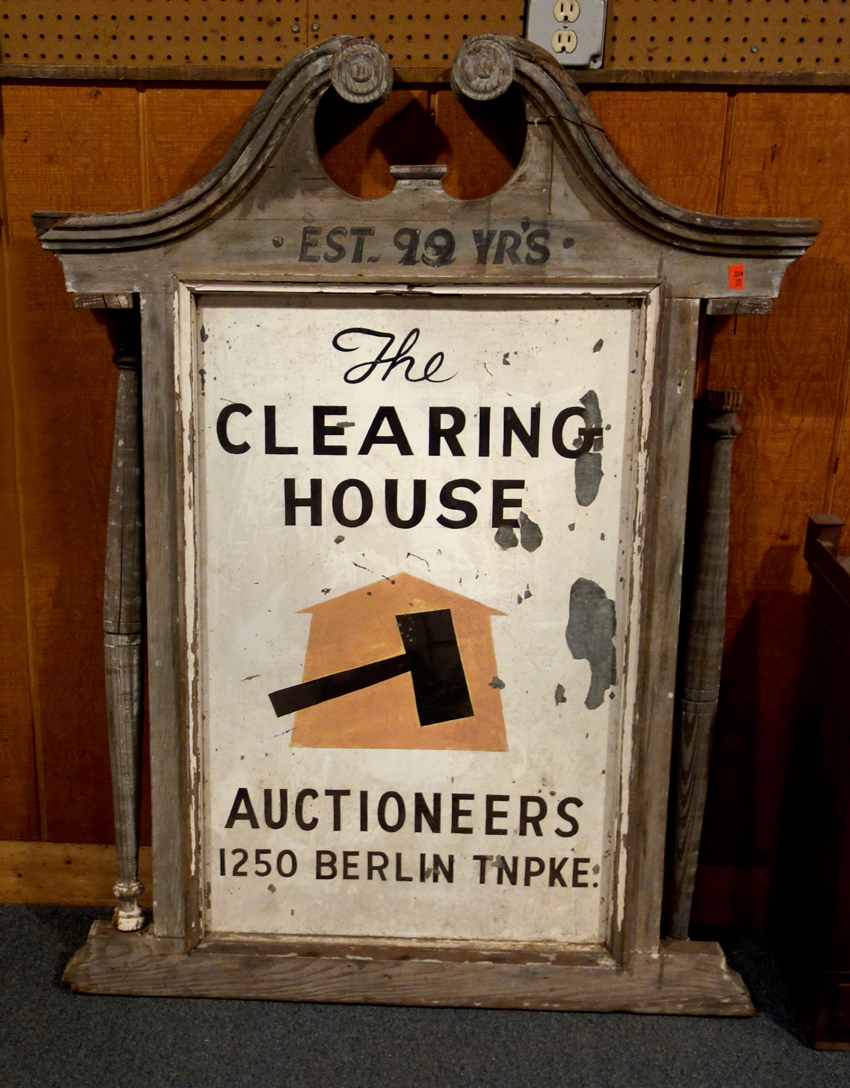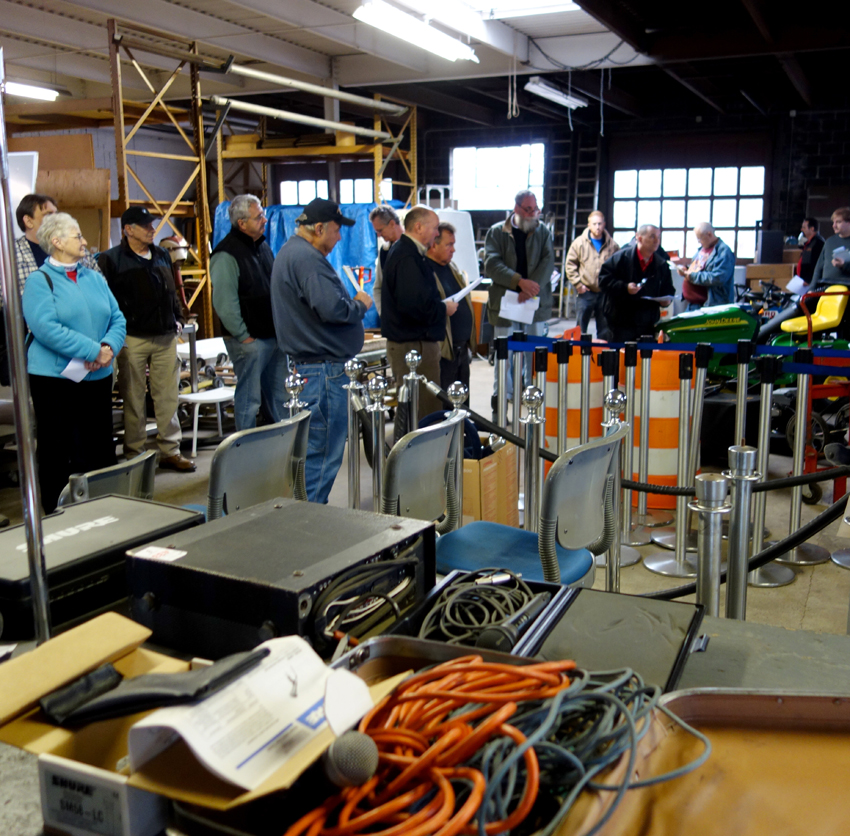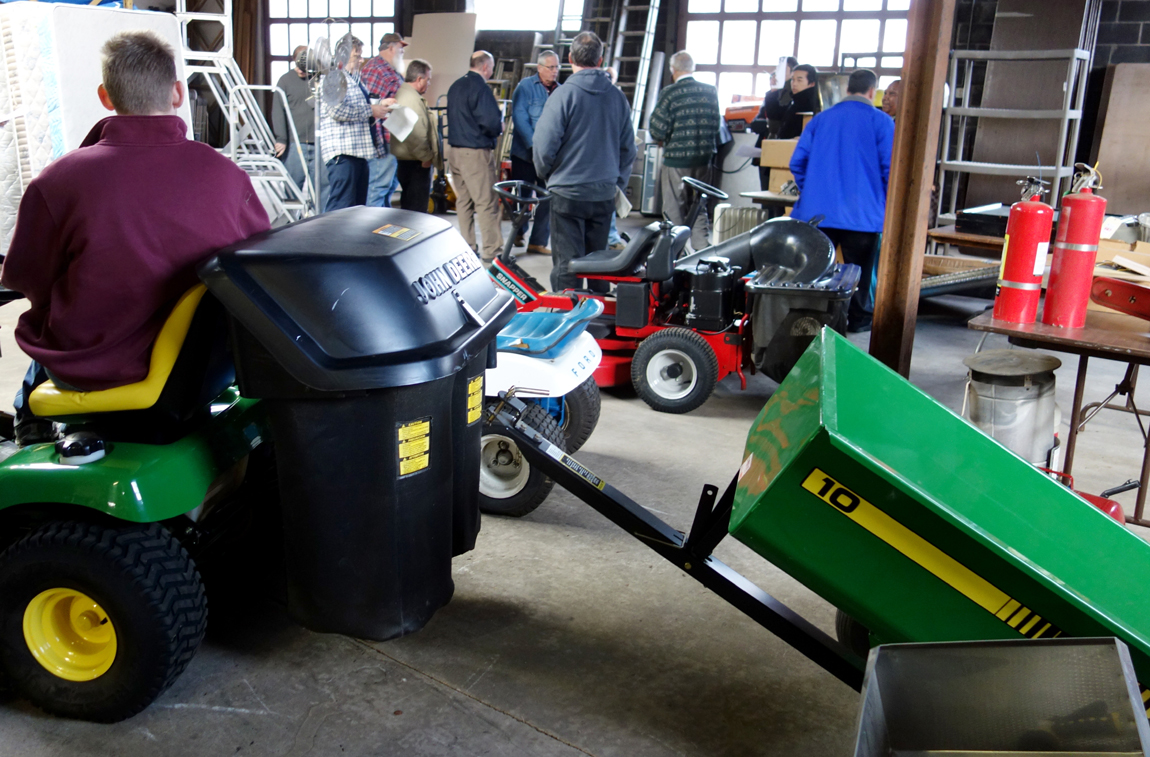Review and Onsite Photos by R. Scudder Smith
Catalog Photos Courtesy Clearing House
WETHERSFIELD, CONN. — In a recent interview with Antiques and The Arts Weekly, Lucille “Missy” LeClair recalled a number of highlights at Clearing House during its 66-year run as one of Connecticut’s important auction houses. There were the estates of two prominent families, the Goodwins and the Lewis Fox family, as well as an Oriental rug that brought more than $100,000 and a matching lowboy and highboy at better than $80,000. A number of weathervanes, fine ceramics, folk art, paintings and trade signs have all passed through Clearing House and enhanced notable collections near and far.
But that was not the case on Thursday, December 18, and it never will be again. At this final auction items included a few stepladders, packing blankets, old lawn mowers, dollies, showcases, a large variety of hand tools, some upholstered furniture, more than 500 banquet chairs and even the bronze lamps, 7½ feet tall, that always lit the front entrance to the gallery at 207 Church Street.
This swan song auction started at 2 pm in the storage-garage portion of the building, not well heated, with both Missy and Steven Smith, the auctioneer, seated on a movable bench-desk arrangement, about 5 feet off the ground, calling and recording the bids. About 25 people were on hand for this first session of the auction, bidding on all of the equipment gathered over the years to run auctions, including rolling carts, a Yale fork lift, pallet jack, blankets, showcases, folding tables both round and rectangular, hand trucks, and more than 500 stacking blue vinyl and metal high grade chairs, 175 of which went to a nearby Baptist church for $500. “They are worth a great deal more, but let it be, in part, a donation to the church,” Missy said, “and that includes the buyer’s premium.”
A two-hour break gave time to move on to another room where a nice variety of food had been spread and was consumed rapidly. One after another, large pizza boxes were emptied, wraps disappeared and various hot trays were about emptied before people moved on to the cookie plates and fresh fruit. “Auction people are always hungry, and we were ready for them,” Missy said.

This bronze lamp, one of a pair that lit the front entrance to the building, sold for $7,475. Each measures 7½ feet tall.
At 6 pm it was back to the garage area for the sale of both sit-on and hand mowers, with a John Deere tractor-mower with only 92 hours of running time, complete with a large leaf catcher attached, plus a never-used cart and seeder, selling for $2,070. All prices noted include the buyer’s premium.
Then back to a warmer area where many garden pieces, including cast iron urns, cement planters and benches, and iron furniture were sold, along with paintings, outdoor lamps and some furniture. Steven Smith, now on a single seat rolling platform, was pushed into an adjoining room with more furniture, paintings, lamps and an early sign for Clearing House Auctions, and then on to the largest gallery to auction off upholstered furniture, beds, tables, a lowboy, large display cabinets, lamps, stands, a large ship’s wheel and other decorative objects, most of it of recent vintage and good condition.
It has been a long and successful road for Clearing House, starting in 1949 by William and Lucille LeClair in Unionville, Conn., and moving in 1955 to Wethersfield. About 20 years later another move kept them in town and put them in a former Pepsi bottling plant which was converted to workable auction space, including storage on the two upper floors.
The late Thomas LeClair (d 2011) followed his father as auctioneer for 40-plus years and ran the business with his sister Missy. “It has been a rough four years, working seven days a week, doing the buying, selling, estimating, consignment pickups, advertising and paying the bills, and I will not miss all that work,” Missy said. However, neither Tommy or Missy ever worked any place except at the auction gallery, so, “I am going to keep my fingers in it a bit by helping and advising people when they want to sell or when they want to buy,” Missy said.
“I knew my auction days would really be over when we sold the sign made of large, handcarved wood letters, gold painted, off the front of the building and we had to get an opening bid of $1,000, but that did not happen,” Missy said. She needed that bid due to the high cost of removing the letters from the building.
How long the name will remain on the building is yet to be seen, as the site has been sold to a developer who intends to create some high rent condos by converting the existing building and some new construction at the rear of the existing structure. As for Missy, the sign is still up, but she has moved away, for good, from the auction house.
Gallery

















